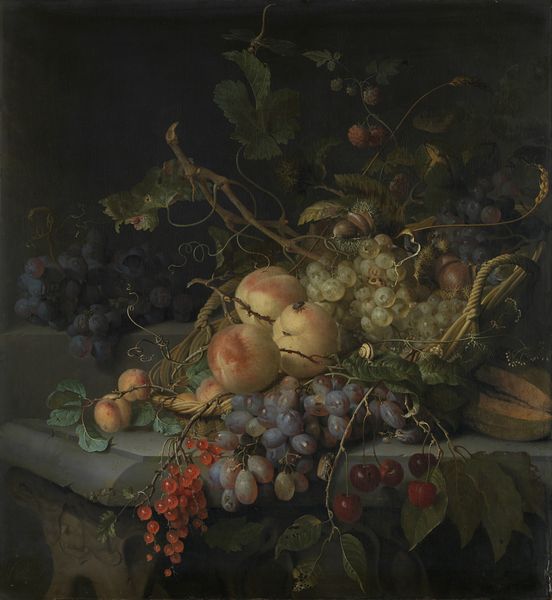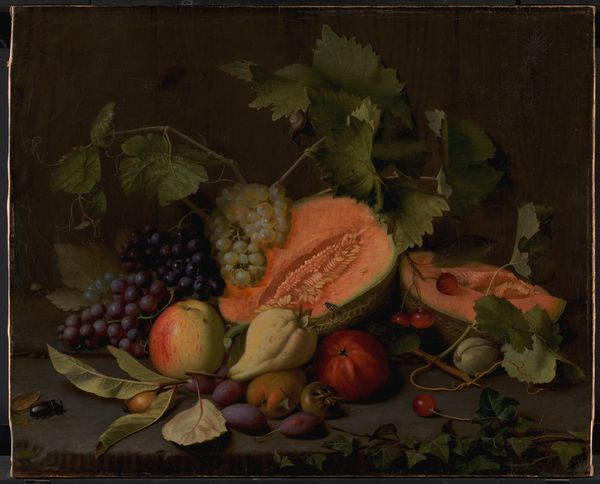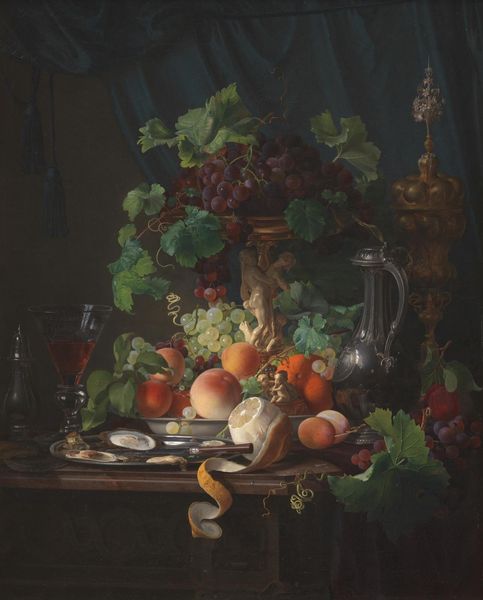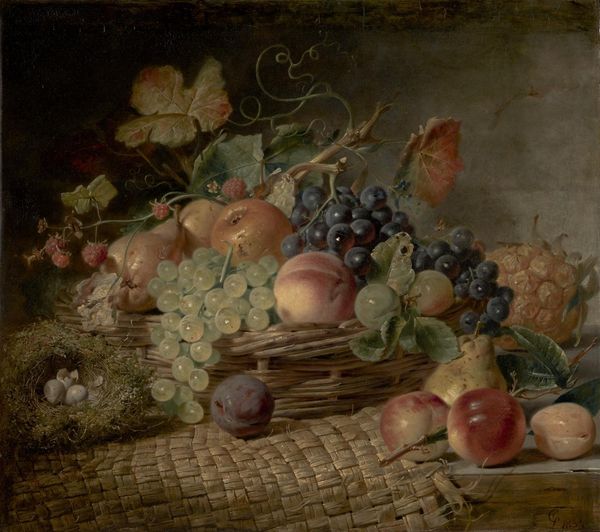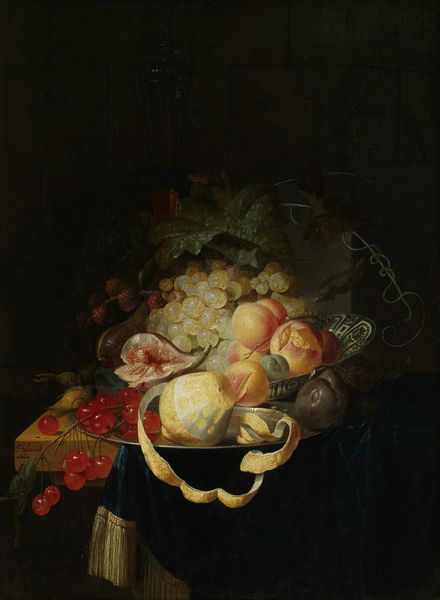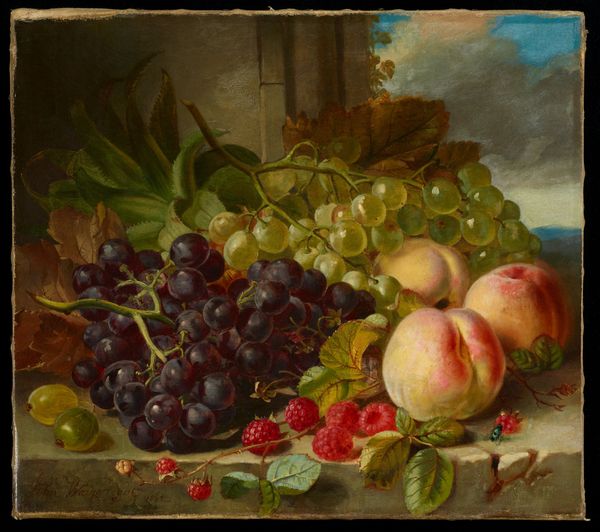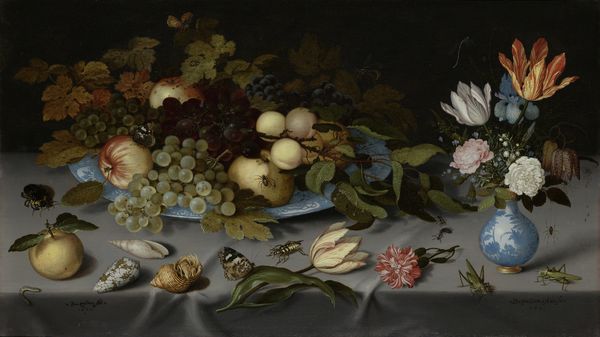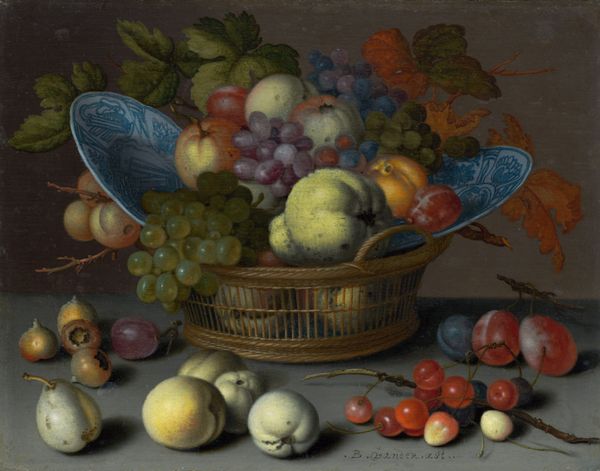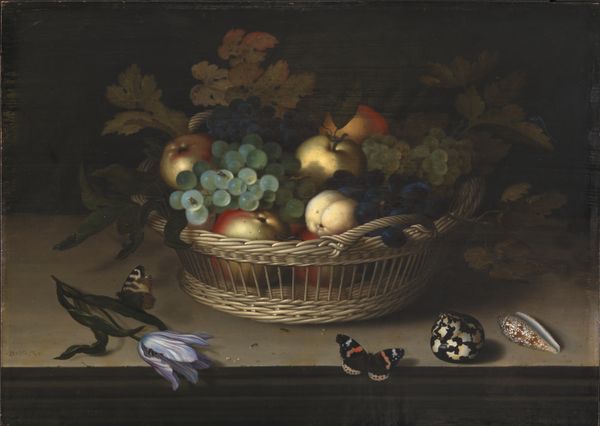
oil-paint
#
baroque
#
dutch-golden-age
#
oil-paint
#
oil painting
#
underpainting
#
painting painterly
#
food art
Dimensions: overall: 90.2 x 112.1 cm (35 1/2 x 44 1/8 in.) framed: 111.8 x 133.4 x 7 cm (44 x 52 1/2 x 2 3/4 in.)
Copyright: National Gallery of Art: CC0 1.0
Editor: This is "Still Life with Grapes and Game" by Frans Snyders, from around 1630. It's an oil painting, and the first thing that strikes me is the contrast between the opulence of the grapes and the dead game birds. What's your take on this work? Curator: The "still life" genre is anything but still; it's deeply implicated in cultural and political power dynamics. In 17th-century Flanders, Snyders depicts not just objects, but an entire social and economic system. How do you read the power relations inherent in this display of consumption and control? Editor: I guess I hadn’t considered that. It seems straightforwardly celebratory… almost… like showing off wealth. Curator: Exactly! The grapes and game symbolize luxury and abundance. But abundance for whom? Consider the history of hunting rights, land ownership, and the accessibility of these foods to different social classes. This isn't just a painting; it's a statement about who has the right to access resources. Doesn't the abundance feel almost aggressive when you look at it from that perspective? Editor: It does. The dead animals, so plentiful, seem almost… wasteful now. Was this kind of symbolism typical for Snyders? Curator: Very much so. Snyders often worked with artists like Rubens, adding still life elements that underscored the grand narratives of wealth and power. These paintings become sites where we can interrogate the ethics of consumption and the structures of inequality. What does this say to us now about our own relationship to consumer culture? Editor: This has really shifted my understanding. It’s not just a pretty picture; it’s a reflection of social stratification and a commentary on excess. Curator: Precisely. It urges us to be critically aware of how art perpetuates, but can also critique, existing power structures.
Comments
No comments
Be the first to comment and join the conversation on the ultimate creative platform.
